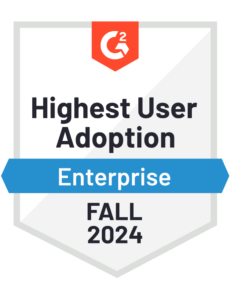6 Ways to Enhance Your Account Reconciliations
Blog post
Share
CFOs and finance functions have moved into a more strategic role where they are relied upon to help drive critical business decisions. While once seen as simply a necessary back-office function, they are now relied on to deliver new levels of insight and value to their organization. Primarily, this is done through timely processing and deep analysis of the company’s financial information.
As companies grow in size, the amount and complexity of the Office of Finance’s work grows in tandem. To compensate for this additional burden and ensure that there is enough time to meet these new expectations, accounting teams must approach their work in the most efficient and effective ways possible.
Because the account reconciliation process forms the foundation of the rest of their work, many finance functions find this to be a good starting point when improving their Record to Report (R2R) process.
Below you will find six best practices that can help your organization improve the account reconciliation process.
Automate the Reconciliation Process
A recent study conducted by Ventana Research found that an increasing number of organizations are introducing various amounts of automation into their Office of Finance. Despite the increase,
Many companies are still slow to embrace new technology — instead relying on legacy tools that require manual processes, such as spreadsheets. While spreadsheets will always have their place in the business world and are an essential tool for many accounting tasks, they are an error-prone tool when used for repetitive, collaborative and enterprise-wide processes. The account reconciliation process is remarkably chaotic and complex and carries a significant level of risk of misstatement for organizations that have not yet automated it.
Additionally, providing the level of insight necessary to help guide the organization requires a significant amount of time dedicated to analyzing the data – a difficult task when bogged down with time-consuming spreadsheet processing.
An automated solution can improve the integrity of all financial statements while speeding up the process and minimizing the inherent risks of conducting the process manually.

Prioritize Standardization of Processes
Due to an increase in automation adoption, the amount of organizations that can close their monthly books within four business days has grown from 29% to just under half over the past 5 years. While this is a promising development in regard to the future of finance functions and their ability to add value to the overall company, many have begun rushing into automation without first laying the groundwork. Automating any process can increase the speed of the work being completed, but without standardizing the process, there is no guarantee that the process is being done correctly. In other words, some of the organizations are likely just doing the wrong thing faster.
In order for automation to be properly implemented, a global reconciliation policy that documents how the account reconciliation process should be performed needs be put in place and enforced across the organization. For example, organizations should ensure that the reconciliation templates being used are all agreed upon and consistent across the entire organization. Doing this will help ensure that the process is not just being done quickly but also consistently and correctly.
Establish a Risk-Based Approach with Materiality Thresholds
One of the most important things that can be done for an account reconciliation process is to establish a risk-based approach and identify the accounts that inherently have the greatest risk of error.
Not every account requires the same level of detail and attention, so identifying which ones need prioritization can decrease the risk associated with having to rush in order to meet deadlines and overlooking important accounts.
Establishing this best practice requires a thorough and balanced analysis of both quantitative and qualitative factors for each account. Those accounts can then be categorized and given a high, medium, or low-risk rating. Ultimately, the risk rating of the account determines how often it needs to be reconciled (monthly, quarterly, annually) as well as the due date of the reconciliation (I.e. business day 5) and where human review is needed.
Fill in Manual Gaps
When introducing automation into the account reconciliation process, many organizations don’t take a comprehensive approach with the automation and find themselves performing a significant amount of manual work after implementation.
Organizations can look to expand upon their current automation by:
- Setting up auto feeds for GL and SL balances into the reconciliations
- Automatically certifying GL balances (reconciliations/ substantiations/ justifications) that qualify for specific risk thresholds
- Automating Flux Analysis – period over period balance comparison and explanations
Allowing automation to encompass the full scope of the account reconciliation process allows accountants to gain more value out of their automated solution and spend their time on higher-value tasks.
Evaluate and Improve Processes Over Time

Like any other process, the way in which accountants conduct their account reconciliations should be evaluated and improved over time. Things like employee turnover, new input fields and M&A activity can all impact how the process needs to function. In order to properly evaluate the effectiveness of processes, the Office of Finance should periodically:
- Evaluate matching percentages
- Look at data files
- Identify new key fields
- Ensure that match rules are still applicable
While changes might be minor at first, continually fine-tuning processes over time will help ensure that the Office of Finance is future-proofing and prepared to adapt to organizational changes and expectations from stakeholders.
Additionally, technology like Trintech’s Dynamic Account Maintenance (DAM) enables this endeavor by also automating some the improvement process. With Dynamic Account Maintenance the Office of Finance can automatically change approval risk rating and add an additional level of approval based on user-defined rules.
While many organizations may find it difficult to take the time to look for process improvements, doing so maintains their efficiency and effectiveness and automating that process ensures those benefits no matter how busy the Office of Finance may become.
Expand the Full Impact of Automation
While the work completed during the account reconciliation process may create the Record to Report (R2R) process’ crucial foundation, it is not created in a vacuum. The data used for account reconciliations relies on properly handled journal entries. Additionally, any work completed by automation during the account reconciliation process that is handed off for further processing later in the Record to Report has the potential to become incorrect if handled manually.
Automation has allowed accountants to move past a back-office function towards one that provides significant value to the organization. However, in order to realize the full benefits of automation, it must be applied throughout the entirety of the R2R process. By looking at automation as something where the benefits are maximized when applied holistically, opposed to isolated instances, the Office of Finance can further ensure the efficiency and effectiveness of their work.
“Before Cadency, all of our reconciliations for the balance sheet were conducted differently by separate departments. Because these were printed out in huge balance sheet books, by the time they were all done and looked at we had already gone into the next period. Now that we have exposure to the balance sheet, we know what the reconciliation items are and how they are standardized – we’ve got our entire balance sheet organized.” –Autozone
Check out the Business Case for Automated Reconciliations to discover the ROI of implementing the best practices outlined above.
Written by: Caleb Walter







